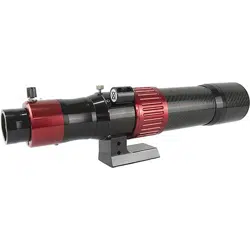Loading ...
Loading ...
Loading ...

Features of the Sun in Hydrogen Alpha:
By observing the sun
with a narrow
bandpass filter tuned
to 6562.8Å, we can
observe the behavior
of the Sun's
Chromosphere. The
chromosphere is like a shell of gas around the Sun's photosphere,
always moving and changing. The chromosphere's structure behaves
differently in active regions than quiet areas, where magnetic field
lines are stronger. Thought to be tied to the photosphere, the
chromosphere is governed by magnetic forces and, yet it still has its own
IntraNetwork (IN) of material oscillating every 5 minutes.
On the limb, even a
rather wide filter of 1Å
or more will show
prominences, a
detail of the
chromosphere
projected against the
dark black contrast of
space. To observe the details of chromosphere on the face of the sun,
we need a narrower filter to eliminate more off-band light of the
photosphere and continuum. We need a filter less than 1.0Å. The
narrower the filter's bandpass, the more contrast we will see - down to
0.4Å, where prominence structure is reduced due to high velocity and
subsequent wing shift.
Filaments appear as
large, dark eyebrows
across the surface of
the Sun.
With a brightness of
about 10% of the disk
due to scattering,
they appear
dark on the surface, but on the limb, show as a prominence. Active
Region Filaments (ARF) differ from Quiescent Region Filaments (QRF).
ARF are darker, smaller and have more coherent fibril structure along
their axis. A sheared magnetic field runs parallel to this axis, permitting a
sizeable flare. QRF may produce a big Coronal Mass Ejection (CME). An
ARF may erupt and reform several times.
Loading ...
Loading ...
Loading ...
